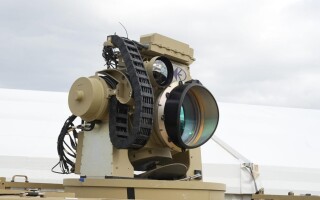Rugged mission displays for surveillance applications
StoryMarch 30, 2010
Helicopters and light aircraft are used extensively for policing, homeland security, border control, and many other forms of aerial surveillance by military and civilian organizations. Equipped with a range of Electro-Optical (EO) sensors, these aircraft have mission-system capability to display, process, and record sensor data independent of their flight-safety critical avionics systems.
Helicopters and light aircraft are used extensively for policing, homeland security, border control, drug interdiction, and many other forms of aerial surveillance by both military and civilian organizations. Equipped with a range of Electro-Optical (EO) sensors such as low-light TV, Forward Looking Infrared (FLIR), and a new generation of High Definition TV (HDTV) cameras, these aircraft have mission-system capability to display, process, and record sensor data independent of their flight-safety critical avionics systems. Mission data and real-time sensor images are displayed to operators and flight crew on rugged flat panel displays. By incorporating direct operator input via touch screen and soft keys, plus video switching and windowing within each display unit itself, a mission system can be configured cost effectively and flexibly using off-the-shelf rugged computing components.
Video switching and display
Mission display systems have evolved rapidly from a model of one sensor feeding one display to multisensor, multiple display systems needing complex video distribution, switching, and cabling with additional requirements for recording and uplink/downlink communications. Typically a multisensor system will have two or three operator positions, each with more than one screen. Each operator can select from any – or a number of – video sources from the sensor suite, other operators, or computer generated graphics such as maps or uplinked images. The chosen method of video distribution might also need to connect the sensor video to the mission computing system for tracking or other image processing tasks prior to display. Recording must also be selectable from any of the screens or the sensors or computing system.
This need for flexibility calls for considerable quantities of cables and a video switching subsystem to provide for all the possible routing and video formats, such as analog or digital (DVI). Architecturally, multisensor mission systems have made use of a separate, very complex video switching and distribution subsystem to interconnect various permutations of sensors, mission computers, and display screens. However, by combining many of the switching and display functions such as picture-in-picture and multiple sensor windows with the ability to route sensor images to other operator positions within the display itself, appreciable savings in cost, cable space, weight, and complexity can be achieved.
Typically an operator will interact with the mission system using a range of input devices such as a keyboard, function keys, pointing devices, and a touch screen. The Man Machine Interface (MMI) is most often handled by the mission computer as a set of discrete functional devices; every key press or command input requires processing and consequent action to be taken. Many such operator MMI functions include switching video sources, creating multiple windows, or pointing or dragging images using the touch screen and requiring no assistance from the mission computing system for their operation.
Mission displays integrate switching and MMI
This class of multisensor surveillance systems relies heavily on direct operator interpretation of incoming images, sensor selection, and viewing characteristics while the mission computing system performs mission management functions independently of the image content or operator’s surveillance task. However, the mission computer might be providing logistical or tactical data such as the disposition of resources on the ground, or digital maps that can be selected and displayed by the operators. This is typical of a helicopter-borne police surveillance application. This platform also offers ample space for both operators and flight crew, enabling the use of larger screens in 16:9 format for the display of high definition images or for multiple windows of lower resolution on a single screen. A new breed of rugged mission display is emerging that is ideally suited to these types of applications. These new displays provide integrated, extendable video windowing and switching capability controlled by programmable soft keys and touch-screen input, which – when paired with a rugged laptop-type PC – offers extensive mission system functionality. An example of such a helicopter-based police surveillance system using widescreen 20-inch mission displays supplied by Curtiss-Wright Controls, Embedded Computing (CWCEC) is depicted in Figure 1.
Figure 1: A helicopter-based police surveillance system uses widescreen 20-inch mission displays.
(Click graphic to zoom by 1.4x)
By integrating a sensor display device with video switching and distribution plus programmable display control functions, the resultant mission display becomes a highly functional but economical mission system building block. Already proven in helicopter and light aircraft surveillance roles, this architecturally flexible approach is well suited to many similar applications such as coastal or fishery protection, operator positions for remotely operated ground and underwater vehicles, and Unmanned Aerial Vehicle (UAV) ground stations.
To learn more, e-mail Steve at [email protected].







